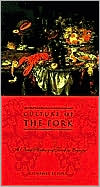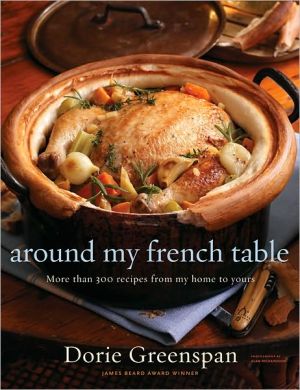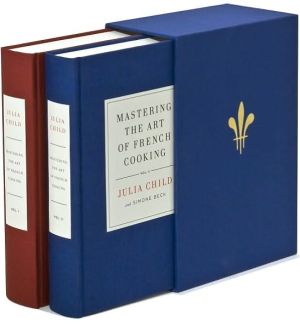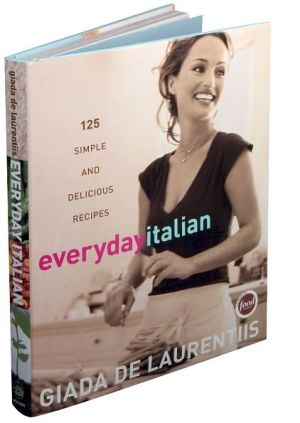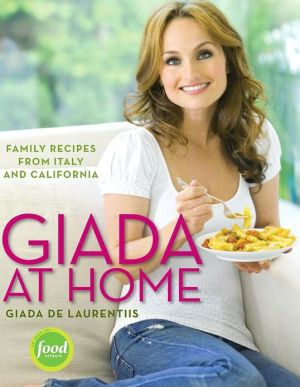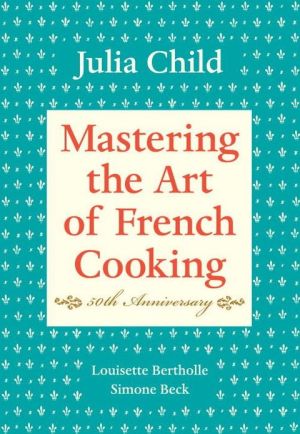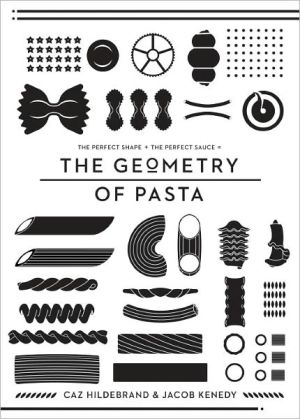Culture of the Fork: A Brief History of Everyday Food and Haute Cuisine in Europe
We know where he went, what he wrote, and even what he wore, but what in the world did Christopher Columbus eat? The Renaissance and the age of discovery introduced Europeans to exotic cultures, mores, manners, and ideas. Along with the cross-cultural exchange of Old and New World, East and West, came new foodstuffs, preparations, and flavors. That kitchen revolution led to the development of new utensils and table manners. Some of the impact is still felt -- and tasted -- today.\ Giovanni...
Search in google:
The Renaissance and the age of discovery introduced Europeans to exotic cultures, mores, manners, and ideas. That kitchen revolution led to the development of new utensils and table manners. Rebora discusses the availability of resources, how people kept from starving in the winter, how they farmed, how tastes developed, what the lower classes ate, and what the aristocracy enjoyed. Publishers Weekly In 1492, Columbus knew nothing of ragout. But perhaps he did enjoy the occasional sliced eel or roasted partridge, according to Rebora's investigation of food habits in Europe, from about 1400 to 1700. A professor of economic history at the University of Genoa, Rebora takes a scholarly approach and a learned tone in considering the impact of peasantry, population booms and modes of transport on the evolution of meals, drinks and, of course, spices. His is a quirky effort, though: no particular topic is treated in any great depth, resulting more in a pocket guide through the fourth dimension than a cultural treatise. This will be a disappointment to those who feel they haven't learned enough about the history of olive oil in four pages. Still, for those seeking the perfect dinner party conversation topic, the book is a godsend. Divided into 18 chapters, each on a different food type ("Stuffed Pasta") or trade passage ("The Sugar Route"), it offers countless delicious factual tidbits. The fork first appeared in Europe during the Middle Ages as a "single-pronged wooden utensil" used for eating lasagna, for instance, while 15th-century France had no plates diners used mensa, rounded disks of bread. Sonnenfeld offers a workmanlike translation despite the difficulties of, say, 60 different Italian words for various types of sausage. Etchings and woodcuts of ancient cheese graters and soup spoons, frying pans and coffee pots enliven the text, and a thorough bibliography refers readers to such Italian works as The Pleasures of Gluttony and Primitive Bread. (Nov.) Copyright 2001 Cahners Business Information.
\ \ Chapter One\ \ \ Grain and Bread\ \ \ The sixteenth century saw a remarkable growth in the European population. Obviously, there were differing rates of increase, and along with the phenomenon of urbanization itself, these variables had important consequences for the feeding of city dwellers.\ Naples doubled its population (from 200,000 to 400,000 inhabitants) between the sixteenth and seventeenth centuries. London experienced the incorporation of country dwellers, who became the object of well-known ordinances for the poor (which in practice were ordinances against them).\ The concentration of the rural population in the capital cities was an indication of economic decline (for the poor, naturally). The closing of fields and pastureland in Great Britain excluded many from the possibility of feeding their livestock and gathering firewood and fruits in the forests. The soil became less and less fertile. People moved to the cities.\ In the Kingdom of Naples the population gravitated to the capital, and assuring supplies of the usual basic foodstuffs became ever more difficult. Emilio Sereni tells how the Neapolitans—the "leaf eaters," as the Sicilians used to call them—became "macaroni eaters." From dishes of meat and greens the move was to pasta, which would lead, in Naples at least, to an entirely new form of eating.\ The history of food, a discipline not as yet highly developed, in the past mostly investigated the wholesale business and commerce of the major foodstuffs. With this methodology one could divide the quantity of grain harvested (which is not the same thing as the real quantity) by the number of inhabitants (similarly "harvested") and derive from these statistics a certain quantity of grain: the presumed consumption per statistical unit of population.\ Aside from the possible presence of breast-fed babies who should have been excluded from such statistical tallies, people are not just statistical units: they don't eat wheat "by the grain." Historians thus reasoned that since grain is transformed into bread, the official price per loaf or weight should be quoted in relation to daily salaries. This led to the conclusion that the poor statistical units stuffed themselves with eight kilos of bread per day. The notion that with grain one can produce flour, from which pasta can be made by hand, seems to have occurred to almost no one, not even when confronted with evidence of imports of hard grain destined for the fabrication of dried pasta in a pasta cutter.\ The same pattern held for foodstuffs such as meat and other products. The problem lay not in food itself but in the economics of marketing food products. Men have for millennia devoted most of their time to procuring food for themselves and to preparing it.\ Simply to dignify the subject of culinary history or to affirm its importance no longer suffices. Basically, eating is not an art, not a literature, not even a science. How can one study a function so basic, so necessary? I seek here first of all to discover those aspects of food tied to the notion of the "the superfluous." Doing so opens a window on the history and anthropology of food. Both cuisine and the banquet are forms of communication!\ The fact remains that grain is not eaten "by the grain." Grain needs to be ground, to be brought to a publicly or privately owned mill, where the miller earns his salary or a profit intended to pay him for his labor (and that of his helpers), along with a return for his investment and the upkeep of the machines. Then there are the baker's salary and the costs of maintaining the oven (if it is a public oven). If the oven is private, you have to pay for the laborer as well as for firewood and upkeep. And there is always the tax surcharge for the Government and for rental of the premises.\ Since bread belongs to the foods that in the Roman era were regulated by state allocation (the famous Annona), bread was (and still is today, albeit with obvious differences) a regulated product considered indispensable for the feeding of the people. The state was therefore compelled to involve itself by setting the price of bread and ensuring that there were no shortages, if necessary by buying grain and controlling its distribution.\ Whatever economists, especially those tending toward macroeconomics, may think, the people fed themselves on cooked foods prepared and combined as the occasion and company warranted according to an alchemical process that we call cuisine. These foods gradually became known dishes that were both the sum of the separate ingredients and an integration of these ingredients.\ This could all be expressed in mathematical terms. The sum of the ingredients becomes something more than a sum, thanks to the balance of the parts, to the time and method of cooking, to the addition of salt or of fats, and to the action of heat. A dish composed of inexpensive ingredients can be far more complete and nutritious than the sum of those parts ingested separately.\ Of all the foodstuffs bread was, in the Roman era, by far the most widely diffused, and it became the very symbol of food. In the towns bread had to be distributed in standardized configurations to which corresponded a price set by the regulators or by the relevant lawmakers. Among the peasants bread was made at home and baked in either the family or the village ovens.\ One could treat oneself to white bread made of sifted wheat flour (especially in the towns) or to black or brown bread made of a blend of various cereal flours (rye, barley, spelt, etc.) or of unsifted wheat when in adequate supply. White bread, baked daily, was intended above all for whoever could pay its price; it existed in various shapes and could be seasoned with oil, lard, milk, or other seasonings.\ We need to remember that Italy, even in the early modern era, was spangled with innumerable cities big and small, governed by lords and oligarchies but all linked by communal and local traditions that even the worst princes had to reckon with. The peasants constituted the largest segment of the population and lived on the land according to agreements that varied from region to region. These contracts were certainly not favorable to the toil-weary poor, but the existence of so many cities provided a source of demand and therefore a stimulus to production. Think of small family farms whose products were not intended for a single center, a capital of the kingdom, but for tens and hundreds of small regional capitals, for the tens of more or less independent courts scattered throughout the peninsula, and for hundreds of abbeys, monasteries, and convents.\ The agricultural contracts in Tuscany or Liguria indicate a substantial presence of nobility with merchant origins among the landowners. In countries outside Italy or in regions with a heavy feudal presence the contractual arrangements seem different, with a greater use of workmen, for example, than was usually agreed to in either Liguria or Tuscany.\ Ownership of land by those cultivating the soil was frequent both in Liguria and in Monferrato. Inevitably, this led to the fragmentation of the property itself, which resulted in turn in smaller family farms that soon became incapable of producing revenue sufficient to sustain the farm families themselves. From this came urbanization and an indebtedness that would have consequences for the quality of such products as wine, as well as creating easy hunting grounds for those who, having lent money guaranteed by a mortgage, now demanded the land as payment.\ Despite various quasi-legal strategies it proved impossible to keep farms intact. With the first succession came a division into halves (if there were two male heirs), and at the second succession each half was again subdivided.\ The indebtedness of the small landowners and the grim conditions of life led to a new phenomenon: litigiousness on matters of property lines and possible profits, on rights of way and water rights, conflicts that afflicted then as now many agricultural regions. From all this arose serious difficulties, among them the abandonment of the land and poverty.\ Conditions for nonlandowning peasants were hardly better: owners asked for almost everything and in the majority of cases gave nothing in return. Poor folk were badly nourished, dependent on polenta (made of spelt, beans, chickpeas). Only rarely did they eat bread, and then a bread that was almost never made of wheat.\ The shortage of bread was, however, a problem that was above all urban. Each peasant was granted a kitchen garden, a strip of land along the far limits of the fields, as well as some farmyard animals and the use of different cereals from the grain harvest. The city dweller, in contrast, had to buy everything, and bread was the symbol of his life. It is no accident that the locution "to earn one's bread" has been used for so long to indicate the price of labor.\ When Manzoni described the riots in Milan shortly before the plagues of 1630, he told of an "attack on the ovens by the crippled." An attack on an oven might seem quite strange. One would expect that people intent on rebellion and pillage would head toward shops that offered foods less ordinary and more expensive than bread, at least for the poor. But this attack is fraught with symbolism: if the people are hungry, the people want bread. The rulers of the ancient republics knew this well. The people want the superfluous, to be sure, but one needs first to guarantee them the necessities. If there is a bread shortage, the people rebel and create serious problems for those in power. A shortage of the superfluous, on the other hand, makes for unhappiness but does not justify subversion.\ The famine that struck Sicily during that same era is well documented. Most revealing is a letter, preserved in the State Archives in Palermo, that recounts how two victims of starvation were found stretched out on the beach with grass in their mouths. This image really hit me, and from that letter sprang my interest in the history of food. The sea at Ficarazzi would have offered to any and all a quantity of food sufficient for survival, but without bread you die. A few years later, I found the same phrase in a book by G. Doria dealing with Montaldeo. He too mentions two men who starved to death with grass in their mouths. It might be mere coincidence, but I believe that this is rather a repeated, almost paradigmatic image invoked to show the seriousness of a moment in culinary history.\ If in the cities bread had to be guaranteed to the people, the use of grains and greens in diverse forms of bread allowed the rural populations to survive. And thanks to demographic pressures far less extreme than those facing urban populations, the peasants did survive and in a fashion less awful than we have been led to believe.\ \ \ Excerpted from CULTURE OF THE FORK by GIOVANNI REBORA. Copyright © 1998 by Gius, Laterza & Figli Spa, Roma-Bari. Excerpted by permission. All rights reserved. No part of this excerpt may be reproduced or reprinted without permission in writing from the publisher. \ \ \ \
Series Editor's PrefaceixIntroductionxiiiChapter 1Grain and Bread1Chapter 2Soup with Bread, Polenta, Vegetable Stew, and Pasta11Chapter 3Stuffed Pasta27Chapter 4Water and Salt31Chapter 5Cheese35Chapter 6Meat43Chapter 7The Farmyard53Chapter 8Fish59Chapter 9Salt-cured Products and Sausages71Chapter 10Vegetables and Fruits87Chapter 11Fat Was Good97Chapter 12Spices103Chapter 13The Atlantic, the East Indies, and a Few West Indies111Chapter 14From the Iberian Peninsula to the Distant Americas: The Sugar Route115Chapter 15From Europe to America129Chapter 16To Eat at the Same Mensa141Chapter 17Eating and Drinking153Chapter 18Dining with Discernment163AppendixDining with Christopher Columbus169Bibliography179Index185
\ Playboy[Rebora's] short history of European food... is filled with plenty of oddities to chew on.\ \ \ \ \ \ The EconomistThought-provoking theories make this... more than just another collection of past culinary oddities.\ \ \ \ Gastronomica[An] intriguing new culinary history of early modern Europe...challenges a lot of previously accepted wisdom....Rebora's highly readable, lively book is bursting with provocative arguments and fascinating new information.\ \ \ \ \ \ BooklistThis highly personalized history of European food and cooking makes delightful reading.\ \ \ \ \ \ Publishers WeeklyIn 1492, Columbus knew nothing of ragout. But perhaps he did enjoy the occasional sliced eel or roasted partridge, according to Rebora's investigation of food habits in Europe, from about 1400 to 1700. A professor of economic history at the University of Genoa, Rebora takes a scholarly approach and a learned tone in considering the impact of peasantry, population booms and modes of transport on the evolution of meals, drinks and, of course, spices. His is a quirky effort, though: no particular topic is treated in any great depth, resulting more in a pocket guide through the fourth dimension than a cultural treatise. This will be a disappointment to those who feel they haven't learned enough about the history of olive oil in four pages. Still, for those seeking the perfect dinner party conversation topic, the book is a godsend. Divided into 18 chapters, each on a different food type ("Stuffed Pasta") or trade passage ("The Sugar Route"), it offers countless delicious factual tidbits. The fork first appeared in Europe during the Middle Ages as a "single-pronged wooden utensil" used for eating lasagna, for instance, while 15th-century France had no plates diners used mensa, rounded disks of bread. Sonnenfeld offers a workmanlike translation despite the difficulties of, say, 60 different Italian words for various types of sausage. Etchings and woodcuts of ancient cheese graters and soup spoons, frying pans and coffee pots enliven the text, and a thorough bibliography refers readers to such Italian works as The Pleasures of Gluttony and Primitive Bread. (Nov.) Copyright 2001 Cahners Business Information.\ \ \ \ \ Kirkus ReviewsA lively stroll through (mostly southern) European culinary history. Eskimo languages have 50 words for snow, suggesting an important feature of the cultural and physical landscape. In the same spirit, there are "sixty specifically named Italian words for pork or beef sausage," to say nothing of the countless ways of naming noodles. Rebora (Economics/Univ. of Genoa) has a fine time touring through the Italian kitchen, pausing here to offer recipes like the kind Christopher Columbus might have enjoyed as a young man (panned partridge from France, lamprey from Portugal, marzipan from the Baltic), there to ponder the history of the fork (which, he tells us, was invented in Byzantium and introduced in the 14th century in Italy, where some clerics viewed it as a "shocking overrefinement"), and there to tease out the origins of local culinary traditions (French settlers brought couscous to Puglia, where it eventually mutated into orecchiette, the ear-shaped pasta associated with that far-southern Italian region). All this is far from the usual whirlwind tour of food history found in the frontmatter of many cookbooks, for Rebora packs his text with learned asides on the biochemical and cultural bases for lactose intolerance, with the transmission from one region to another of methods for curing and treating meat (which led to all those Italian sausages, to Serrano ham, to Turkish pasterme, to German würstel, and on and on), and other arcane data. He argues that the image of the European Middle Ages as a time of endemic hunger is wrong: "I believe," he writes, "that the people mostly had at their disposal adequate food, produce, and goods"-if nothing like the astounding choice that accompaniedthe exploration of the Americas and Asia. Nicely balancing recent encyclopedic treatments such as the Cambridge World History of Food, Rebora's slender volume should be of interest to foodies, cookbook collectors, and historians alike.\ \
